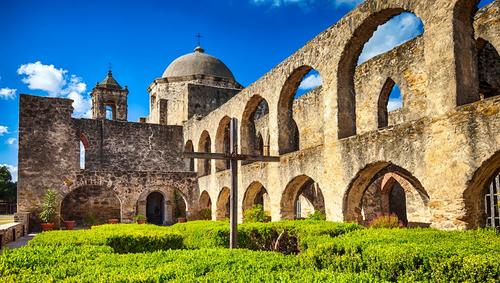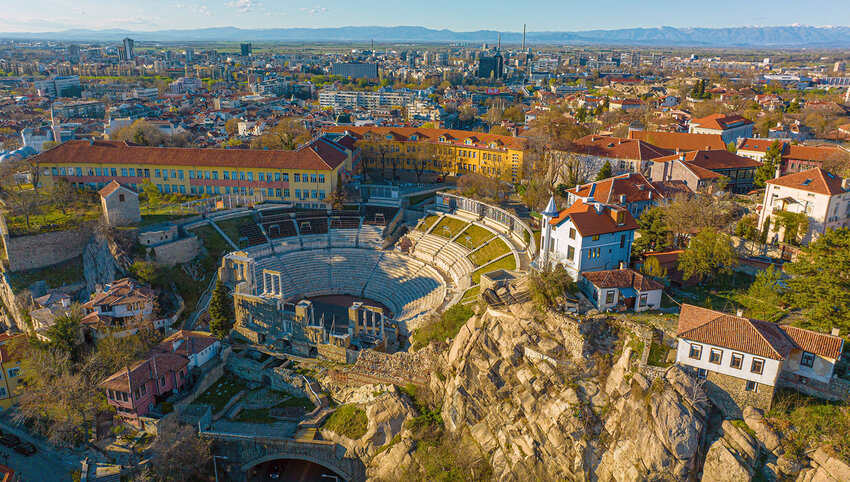If you’ve been to one of the 61 national parks in the United States or have taken a school field trip to an American landmark like the Statue of Liberty, you’ve probably visited a UNESCO World Heritage Site and didn’t even know it. These protected landmarks are recognized for their cultural and natural significance, and make up the fabric of nations and cultures.
There are 24 World Heritage Sites in the U.S. (and Puerto Rico) and each one is special in its own way. But, which ones are worth the visit? To help you figure out which sites to see, we've ranked each World Heritage Site based on quality of experience, accessibility, “wow” factor, popularity, and significance in American history and culture.
24. Papahānaumokuākea Marine National Monument
Hawaii
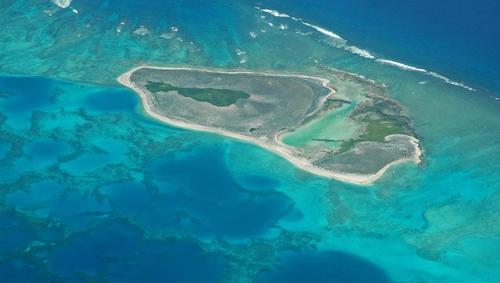
Spreading out over 1,931 km of the Pacific Ocean, Papahānaumokuākea Marine National Monument is a spectacular preserve teeming with vibrant marine life. Encompassing several of the remote northern islands, this region is the largest fully-protected conservation area in the world, including an underwater volcanic range, thriving coral reefs, and unique habitats for flora and fauna.
Despite its stunning beauty and ecological importance, this site sits at the bottom of our list simply because it’s almost impossible to visit. Visitors require a permit for conservation, management, education, research, or cultural pursuits to explore the area's remarkable features.
Since you can’t visit this UNESCO Site without a permit, the closest you’ll get is a visit to one of the educational facilities in Hawaii that present exhibits featuring this protected area.
23. Monumental Earthworks of Poverty Point
Louisiana
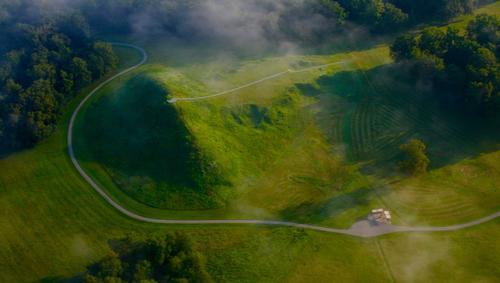
Hidden in the Lower Mississippi Valley of Louisiana, this UNESCO site flies far under the radar. Those who lived in the area around Poverty Point built this settlement 3,700-3,100 years ago during the Late Archaic Period.
Today, Poverty Point makes the UNESCO list due to the impact this ancient way of life had on the landscape. Native American hunters, fishers, and gatherers moved the soil by hand to build mounds, C-shape ridges, and a large central plaza, which you can still explore today.
However, despite its rich history, visiting the site leaves something to be desired, and when you arrive you'll mostly be staring at what appear to be plain, grassy hills.
Still, if you do decide to make the trek, the best time to see the mounds is during the fall or spring, so you can avoid the humid Louisiana summers. To get the best view of the site, climb Mound A, a 72-foot-tall hill also known as the Bird Mound, the second-largest mound by volume in North America.
22. Cahokia Mounds State Historic Site
Illinois
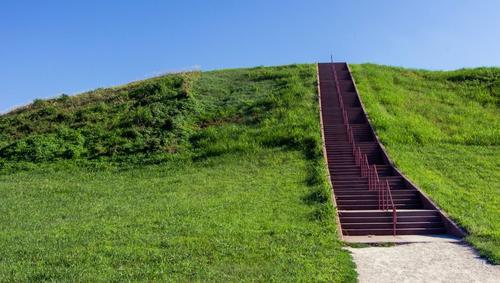
Some consider the Cahokia Mounds America’s first city since the establishment dates back to the 8th century. The region was once home to a population of between 10,000 to 20,000 residents, making it the largest prehistoric Native American settlement north of Mexico. The Cahokia site once included 120 mounds, but today less than 100 mounds are left standing, including the 100-foot-tall Monks Mound, the largest earthwork in North America.
Like the site in Louisiana, the mounds today are little more than grassy hills. But, since it's only about eight miles from St. Louis, making the journey is an easy day trip. The best time to visit Cahokia is during the week in June and July when you can see the archaeologists hard at work on the excavation sites.
21. Chaco Culture
New Mexico
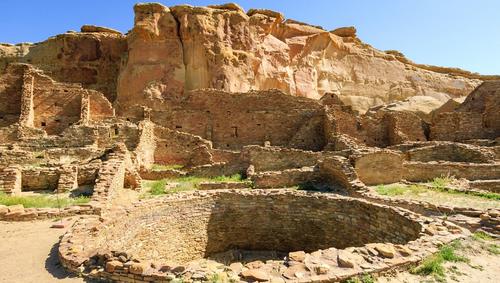
This World Heritage Site in New Mexico recognizes the ancient Pueblo people and their culture. Since it was inscribed in 1987, the park has undergone significant conservation efforts to preserve one of America’s most valuable pre-Columbian historical and cultural areas.
You’ll find a variety of archaeological spots to visit here, including the Chaco Culture National Historical Park, Aztec Ruins National Monument, and five Chaco Culture Archaeological Protection Sites. All of these spots demonstrate the architectural and engineering brilliance of the Chacoan people who inhabited the region from the mid-9th to early-13th centuries.
Check out the amazing ceremonial buildings, houses, kivas (religious buildings), and petroglyphs (rock carvings). The best time to visit the site is in the spring or fall when the weather is pleasant enough to comfortably walk through the monuments.
20. Hawaii Volcanoes National Park
Hawaii
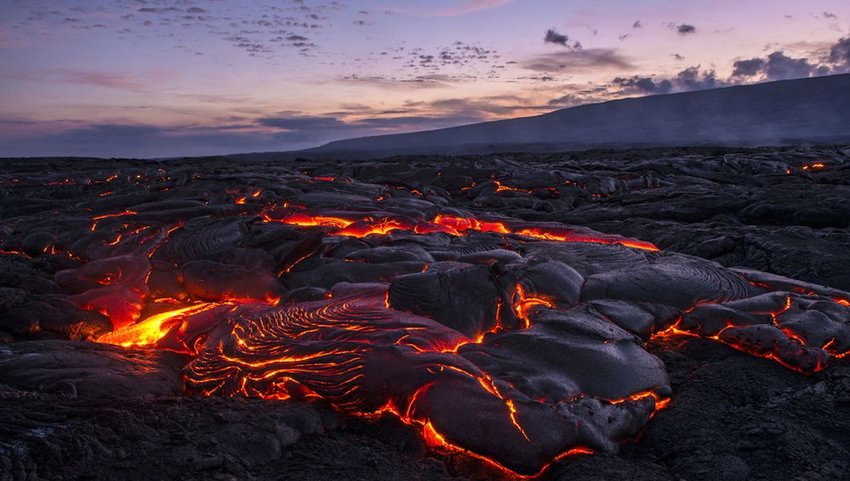
Though the natural spectacle of flaming lava and pitch-black volcanic fields is spectacular, this national park is not ranked higher on our list because of how difficult it is to get there. Volcanoes National Park is home to two active volcanoes — Mauna Loa and Kīlauea. The park is 45 minutes from Hilo on the Big Island of Hawaii, and to truly experience the wonder of the active lava fields, visitors have to take a helicopter ride above the park.
Still, despite the accessibility issues, this park is truly stunning. Where else can you watch lava flow to the sea and stand face to face with glowing volcanic craters? The surrounding tropical landscape is also a haven for native birds and endemic species such as a meat-eating caterpillar, a lava-loving cricket, and the world’s rarest goose. The best time to go is whenever the lava is flowing, so check the park’s website to stay updated.
19. Kluane / Wrangell-St. Elias / Glacier Bay / Tatshenshini-Alsek
Alaska, Canada
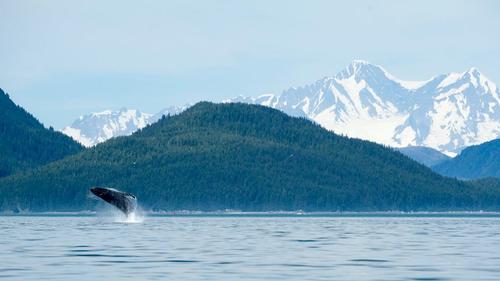
The United States shares this Heritage Site with Canada — Canada owns Kluane and Tatshenshini-Alsek, while the U.S. maintains Wrangell-St. Elias and Glacier Bay National Park and Preserve.
This site is truly breathtaking, and is home to the world’s largest non-polar ice field and some of the longest glaciers on the planet. And when it comes to diverse ecosystems, this multi-park site truly shines, featuring coastal forests, marine life, and alpine tundras that serve as home to bear, wolf, caribou, sheep, and mountain goat populations.
The Wrangell-St. Elias Visitor Center is 200 miles east of Anchorage and there are only two roads into the park, making it particularly difficult to access and impossible to visit in the long, cold winters. Glacier Bay is west of Juneau, and you’ll need a plane or boat to get to the park. June and July are the best times to visit, and if you do make the journey, be sure to hike the Root Glacier Trail in Wrangell-St. Elias where you’ll get to walk on a real glacier.
18. Everglades National Park
Florida
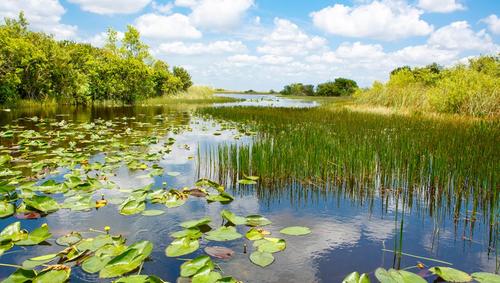
Although Everglades National Park is a massive (we're talking 1.5 million acres) and critical breeding ground for wading birds in North America, it's hard to warm up to a park that's mostly inaccessible. Even the parts that are open to visitors are often patrolled by panthers, hordes of American alligators, and countless snakes.
However, UNESCO was right to declare the Everglades a World Heritage Site. The region protects the largest mangrove swamp in the Western Hemisphere and all the endangered wildlife that call it home.
You can get to most of the park by car, but to truly experience the “glades” hire an airboat and take a tour of the endless waterways. The best time to visit is the spring, fall, and winter — when the weather is tolerable and all the birds numerous and visible.
17. The 20th-Century Architecture of Frank Lloyd Wright
Pennsylvania, New York, Illinois, California, Wisconsin, Arizona
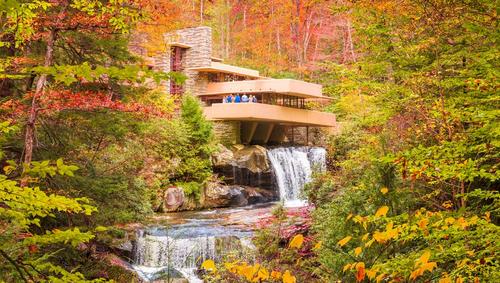
As one of the newest UNESCO sites, the works of Frank Lloyd Wright have joined the ranks of the Taj Mahal and the Great Wall of China in the annals of history.
Eight separate buildings designed by Wright have been grouped together into one World Heritage Site. What makes this entry in the list particularly important is that it marks the first time UNESCO has recognized modern U.S. architecture.
The buildings are scattered around the country and represent several phases of the architect's long and storied career. You have probably heard of his most famous designs — Fallingwater in Pennsylvania and the Guggenheim Museum in New York. The other five included are Unity Temple (Oak Park, Illinois), the Frederick C. Robie House (Chicago), Taliesin (Spring Green, Wisconsin), Hollyhock House (Los Angeles), and Taliesin West (Scottsdale, Arizona).
16. Waterton Glacier International Peace Park
Montana, Canada
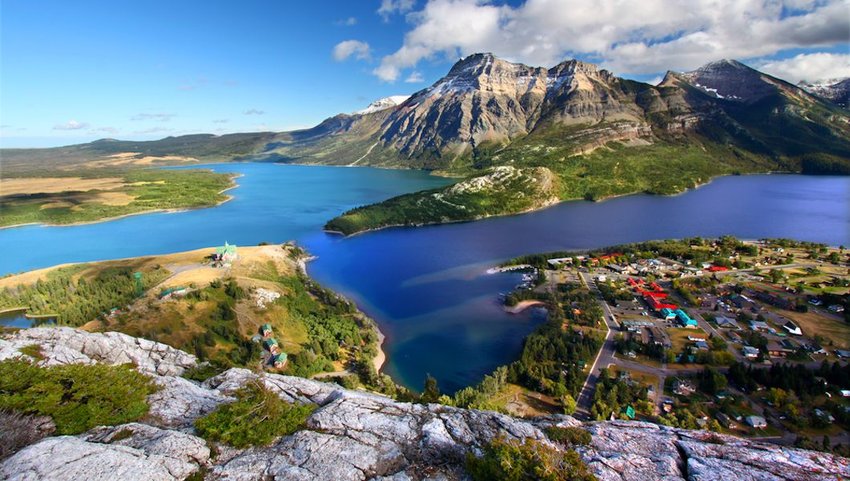
Another shared site with Canada, Waterton Glacier International Peace Park marries Waterton Lakes National Park in Alberta and Glacier National Park in Montana. Together, they form the world’s first international peace park.
While this significance is notable, it's the park's monumental and varied terrain that truly shines. With sweeping prairie grasslands, quiet forests, steep canyons, and towering mountains out on display, this region has earned its title as the Crown of the Continent.
The park is a bit tricky to get to, but you can find many shuttle companies that transport visitors from nearby towns. The best time to visit is July and August when all of the park’s facilities and roads are open. Take a ride on the Going-to-the-Sun Road for an awe-inspiring view of the alpine country, or go picking wild huckleberries. Just make sure you watch out for bears.
15. Carlsbad Caverns National Park
New Mexico
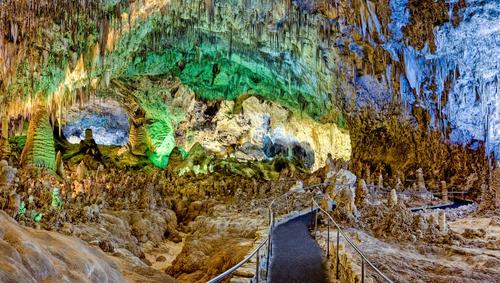
Sprawling below the Chihuahuan Desert is an extensive cave system. Home to more than 100 limestone caves, Carlsbad Caverns National Park offers visitors amazing views of stalagmites, stalactites, rock formations, gypsum chandeliers, and many other unique geologic features.
With massive caverns like Carlsbad Cavern and Lechuguilla Cave, the park is an underground marvel. It's also home to a section of the Capitan Reef, one of the world’s best-preserved and most accessible fossilized reefs.
Located 2.5 hours from El Paso, the best time to tour the caves is between May and October when 400,000 Brazilian free-tailed bats settle in.
14. Taos Pueblo
New Mexico
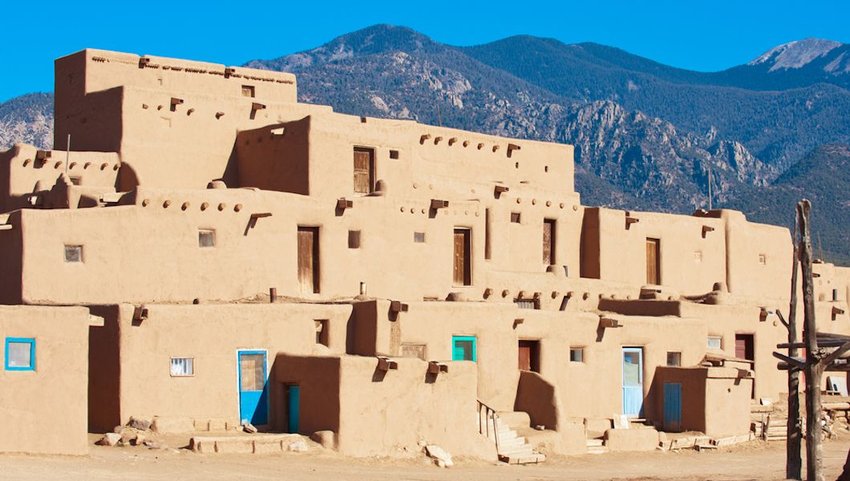
Taos is the second archaeological and cultural site that honors the ancient Pueblos. The settlement was built between the 13th and 14th centuries and belongs to the Native Pueblo people in New Mexico. The site showcases the native people's vibrant culture and traditions from the pre-Columbian era to the present.
You’ll find the Taos Pueblo settlement at the base of the Sangre de Cristo Mountains. The adobe-walled village is the largest in North America still in existence. The village itself is a spectacular example of ancient building styles, and the surrounding landscape offers gorgeous views of mountains and sprawling desert.
Taos Pueblo is three miles from downtown Taos and the best time to visit is on Feast Days when tribal members honor Catholic patron saints and Pueblo traditions. Check their website before you visit because the village closes for special religious events and for 10 weeks from late winter to early spring.
13. La Fortaleza and San Juan National Historic Site
Puerto Rico
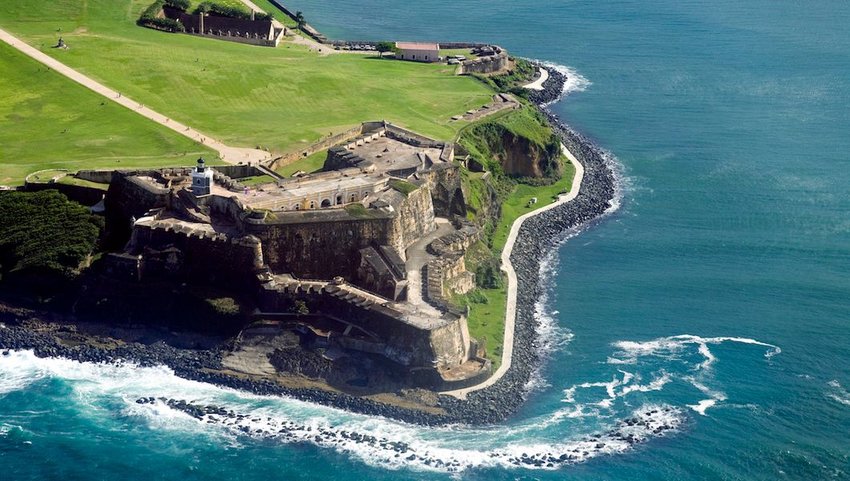
Visitors in search of a dose of tropical life will need to travel south into the Caribbean for this UNESCO site. The buildings that make up La Fortaleza and San Juan National Historic Site were built by Spanish engineers between the 15th and 19th centuries. The four forts and 20-foot-thick defensive walls protected the city and San Juan Bay from invaders. These impressive forts were added to the list by UNESCO to showcase European military architecture.
The castles of Castillo San Felipe del Morro (El Morro), Castillo San Cristobal, Fort San Juan de la Cruz, and La Fortaleza are well worth the trip to Puerto Rico. La Fortaleza was singled out by UNESCO as the first defensive fort built (in 1533) in Old San Juan that the governer still uses today.
If you are in Old San Juan, you can get to three of the forts by foot or tram, but to avoid the cruise ship crowds, consider staying away during the busier winter months and travel in the spring instead.
12. Olympic National Park
Washington State
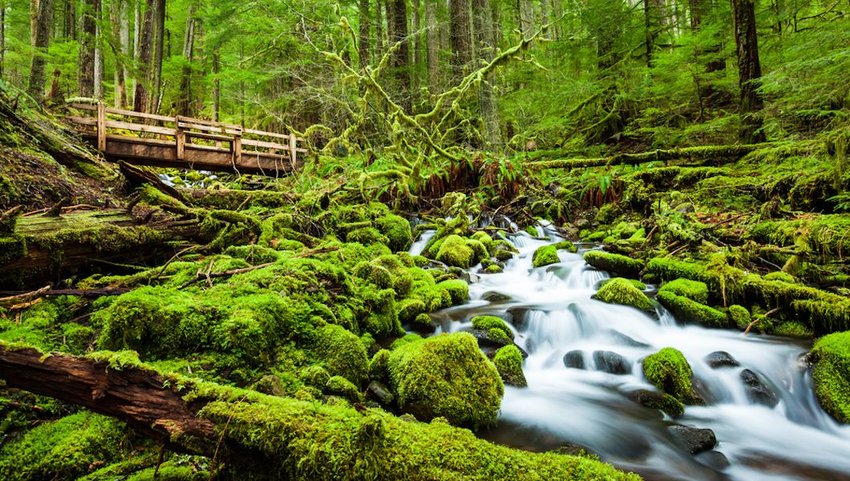
This coastal park in the Pacific Northwest is a study in biodiversity. Featuring forests, alpine meadows, bubbling hot springs, and glacier-frosted mountain peaks, the park is home to a variety of ecosystems and landscapes, each more stunning than the last.
Olympic National Park also has one of the world’s largest temperate rainforests, some of the most prominent evergreen trees on the planet, and 75 miles of Pacific coastline. Multiple miles of trails wind from snowy mountain tops to pebble-strewn beaches, and if you want to get off your feet there's abundant opportunity for fishing and kayaking.
Situated across the Puget Sound from Seattle, the park is easily accessible from the city as a day or weekend trip. The best time to visit is from April to May when the gray whales are migrating south from Alaska.
11. Mesa Verde National Park
Colorado
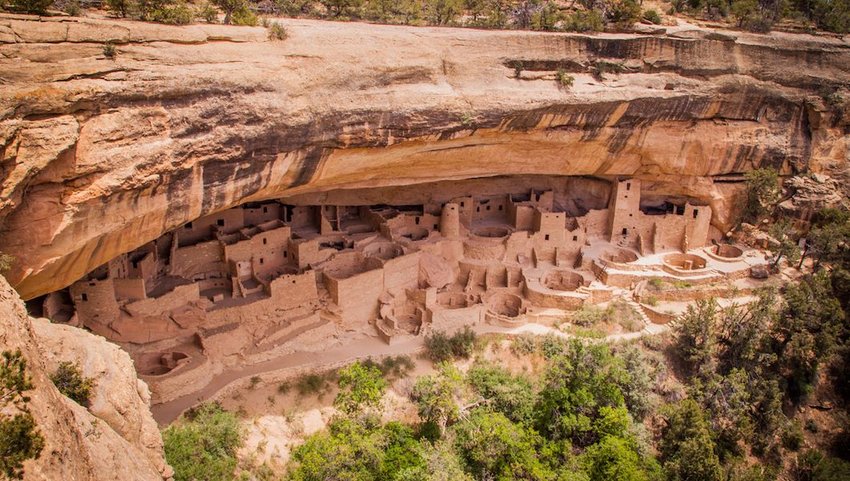
The Pueblo people definitely left their mark on the American West, and their way of life remains intact at sites like Mesa Verde. The region is chock full of thousands of archaeological sites including 600 cliff dwellings dating back to the 5th century. Carved into cliffs sitting 8,500 feet above sea level and surrounded by inhospitable desert landscapes, the tenacity and ingenuity of these ancient people is undeniable.
The park entrance is about 45 minutes from Durango and the best time to see Mesa Verde is May through October when some of the dwellings allow the public to visit. Check out the tons of petroglyphs all along the Petroglyph Point Trail.
10. Monticello and the University of Virginia in Charlottesville
Virginia
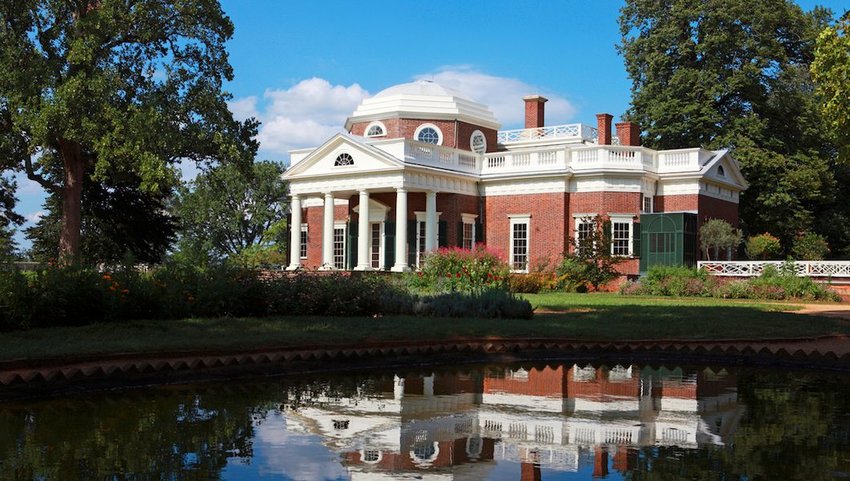
This World Heritage Site is all about our third president — Thomas Jefferson. The author of the Declaration of Independence designed his plantation home at Monticello in addition to the many academic buildings that today make up the University of Virginia at Charlottesville.
Jefferson was an architectural genius and many of his Jeffersonian and Neoclassical designs at the university inspired future college campuses. Reaching the site, which is located in Charlottesville, is easy, and the best time to visit is April when thousands of tulips are in bloom.
9. Mammoth Cave National Park
Kentucky
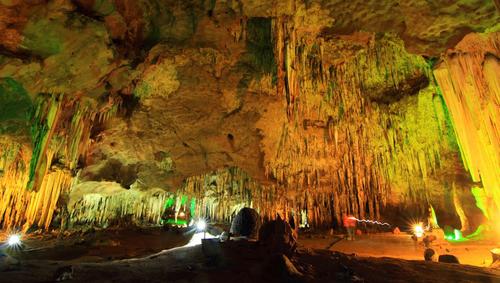
Meet Mammoth Cave National Park — the most extensive cave network in the world. This massive system of subterranean caves was formed over 100 million years ago and contains more than 400 miles of mapped channels that feature almost every type of cave formation that exists, including stalagmites, stalactites, and crystal formations that resemble flowers and needles.
You’ll find the entrance to Mammoth about an hour from Louisville and you can visit Mammoth Cave any time of year. Since you’re underground, the temperature is always a very comfortable 54 degrees. If you’re not afraid of the dark and have an adventurous side, sign up for the Wild Cave Tour that takes you on an extreme tour of the less-traveled parts of the cavern.
8. Independence Hall
Pennsylvania
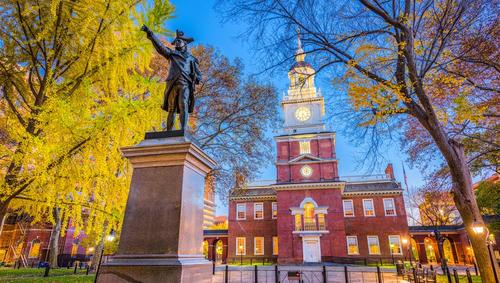
You won't get the wow factor of a national park, but a visit to Independence Hall is brimming with American history. In this very building, America’s Founding Fathers debated, adopted, and signed the Declaration of Independence and the U.S. Constitution. As the literal birthplace of the United States of America, the significance of this building cannot be understated.
This Georgian-style building is in the heart of Philadelphia and is just one of the city's many historic stops. Though chilly, January and February are a great time to visit since admission is free. Any other time of the year you'll have to pay a small entrance fee and will likely wait in a queue before your visit.
7. San Antonio Missions
Texas
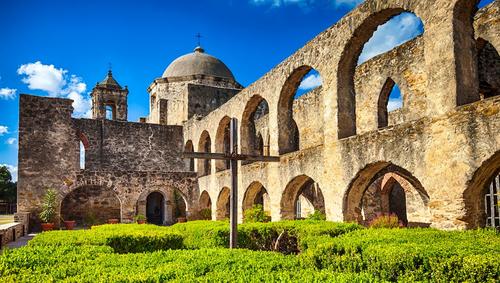
If you visit Texas, expect to see a lot of missions — they’re everywhere. Especially in San Antonio. First up was Mission San Antonio de Valero, also known as the Alamo, which Franciscan priests built to help Spain and the Catholic Church colonize, convert, and defend New Spain. Over the next 13 years, four more missions were built along a 10-mile stretch of the San Antonio River, and together they make up an impressive UNESCO site.
The Alamo is impressive, but if you want to see the best mission, check out the “queen” of all the San Antonio Missions — Mission San José. Once the heart of a vibrant Spanish community founded in the early 18th century, San José attracted people from all over the area. The church was built in 1768 and is still standing today.
Winter is the best time to visit these Spanish structures because you’ll beat the heat and see the bluebonnets in bloom. Plus, you go to Concepción or San José on Sunday, you’ll also get to listen to mariachi mass.
6. Statue of Liberty
New York
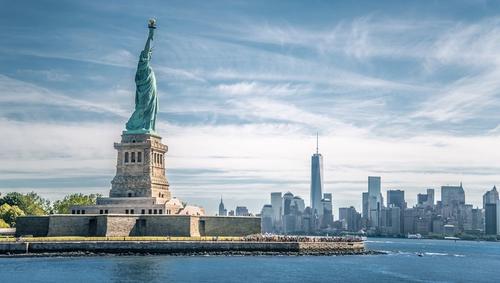
The Statue of Liberty is probably the most iconic symbol of the United States. Lady Liberty was created by artist Frederic Bartholdi and engineer Gustav Eiffel, the famous designer of the Eiffel Tower. UNESCO describes the Statue of Liberty as a “masterpiece of the human spirit” and it's regarded as an icon of freedom all over the world.
The Statue of Liberty has been greeting newcomers to America since 1886, and you can visit her by catching the ferry from Battery Park in Lower Manhattan or from Liberty State Park in Jersey City. To avoid the crowds, try to be on the first ferry out in the morning.
5. Redwood National and State Parks
California
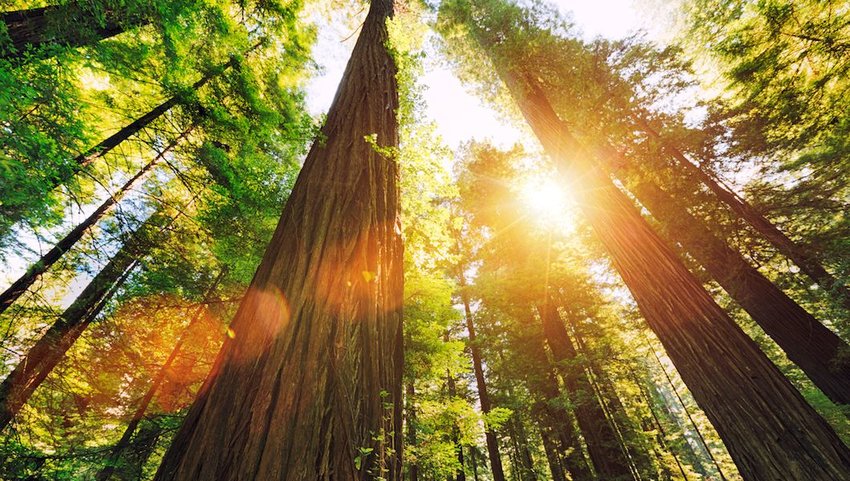
Almost half of the tallest trees in the world are found in the Redwood National and State Parks. This area is famous for its soaring coastal Redwood trees, amazing Pacific coastline, and pristine mountains that attract Roosevelt elk, sea lions, gray whales, and salmon. The parks also provide food for the migratory waterfowls that depend on the preserved lands to nest and find food.
Whether you're strolling through the Avenue of Giants, driving coastal highways or camping underneath towering trees, this park is a must-visit for any outdoor lover.
The Thomas H. Kuchel Visitor Center is on the southern boundary of the parks and sits 312 miles from San Francisco. On its opposite end, the Crescent City Information Center is 112 miles south of Medford, Oregon. Try to avoid visiting from November through April unless you love to play in the rain.
4. Great Smoky Mountains National Park
Tennessee, North Carolina
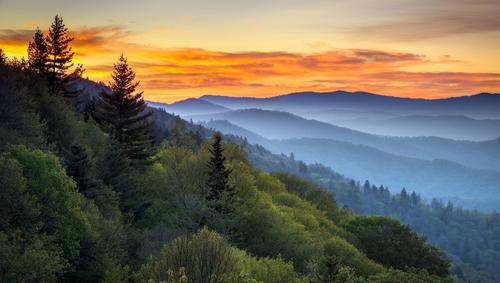
Tennessee and North Carolina share Great Smoky Mountains National Park, which is home to the oldest mountains in the U.S. as well as over 3,500 plant and animal species. The park draws more visitors than any other national park in the country, and it's not difficult to see why. Between rolling, mist-covered hills, criss-crossing trails, and expansive vistas, this gorgeous national park truly takes your breath away.
The best seasons to visit the park are autumn and spring when you’ll get a firework display of fall colors and a dense covering of wildflowers. Unmissable spots include Mogo Falls, the park’s tallest waterfall, and the peak of Mount Cammerer, where you'll be rewarded with incredible 360-degree views.
3.Grand Canyon National Park
Arizona
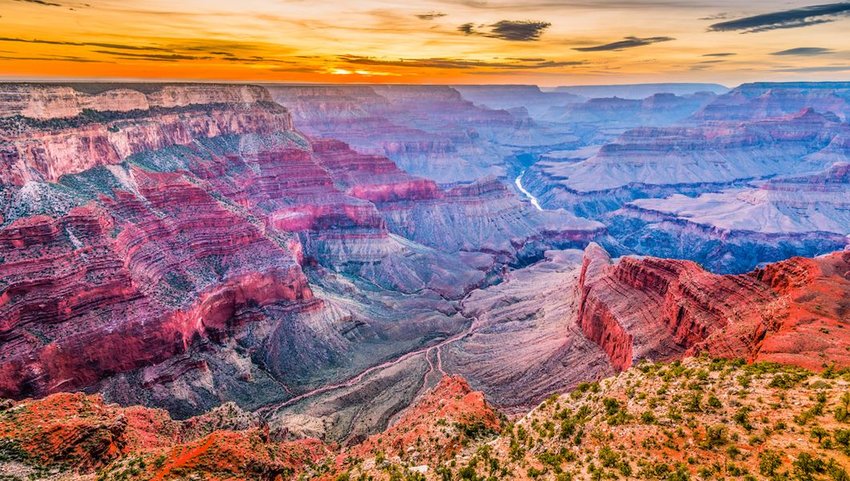
If you haven't seen the Grand Canyon yet, you have to put it at the top of your list. One of the Seven Wonders of the World, Grand Canyon National Park has been around for millions of years and is still going strong.
The mile-deep canyon draws visitors from all over the planet to gaze into its depths, marveling at red and burnt orange rock formations and the carved work of the Colorado River. A visit to the park will awaken your spirit of the American Southwest as you learn about Native American culture and stand in awe of the canyon's sheer magnificence.
The South Rim is open year-round, but if you don’t want to melt from the heat visit during the early spring when balmy temperatures offer a more suitable climate for activities like hiking and camping.
2. Yosemite National Park
California
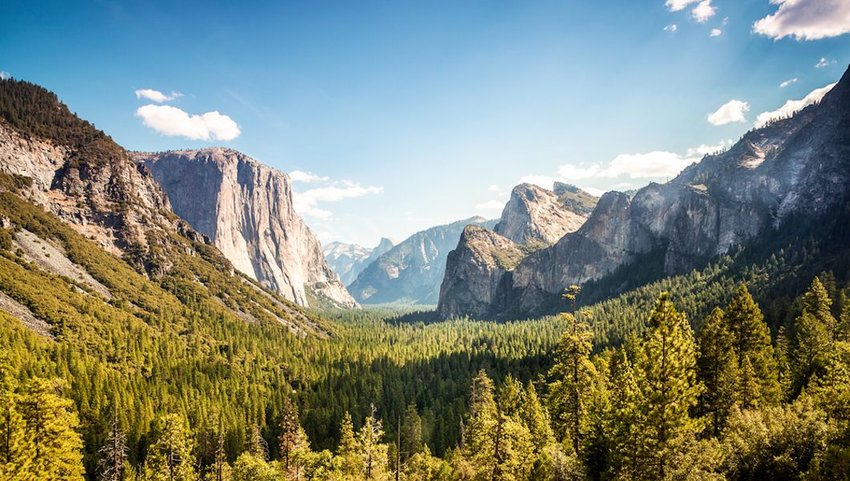
Yosemite National Park is 1,169 square miles of wild cliffs and never-ending Sequoia forests, but most visitors don’t venture beyond the Yosemite Valley, which is only a tiny percentage of the national park as a whole. Those who explore more of the park discover hidden corners and stunning sights.
The park also holds historical significance, as in 1864, Abraham Lincoln signed the Yosemite Grant Act, which was the first time the federal government set aside parkland for preservation and public use. Yosemite also checks just about every box when it comes to accessibility, accommodations, activities, and grandeur.
The best time to visit the park is in April and May when the snow melts and the huge waterfalls come to life. Why not hire an outfitter and really explore all that Yosemite has to offer? Try a three-day camping trip and explore El Capitan and Half Dome, along with other, less-visited corners.
1. Yellowstone National Park
Wyoming, Montano, Idaho
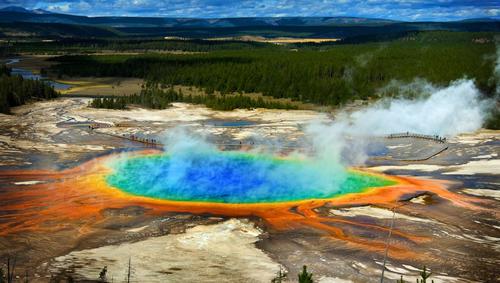
Despite Yosemite topping our list of national parks, Yellowstone National Park surpasses it on our UNESCO ranking thanks to its cultural and historical significance. As the oldest national park ever, Yellowstone set the standard for natural preservation around the world. Plus the sheer number of natural marvels such as geothermal wonders and geysers inspire hundreds of thousands of visitors each year.
While Old Faithful Geyser and Grand Prismatic Spring get most of the attention, according to UNESCO, "Yellowstone contains half of all the world's known geothermal features, with more than 10,000 examples. It also has the world's largest concentration of geysers (more than 300 geyers, or two thirds of all those on the planet)."
Yellowstone is also home to over 9,000 square kilometers of natural landscape that pack a punch, including its very own 26-mile-long, 800+ ft deep Grand Canyon. The area is also rich in fossilized plants and an abundance of bison and bears call this land home. Visit in spring for less crowded roads, blooming flowers, and the young animals that fill the park.

